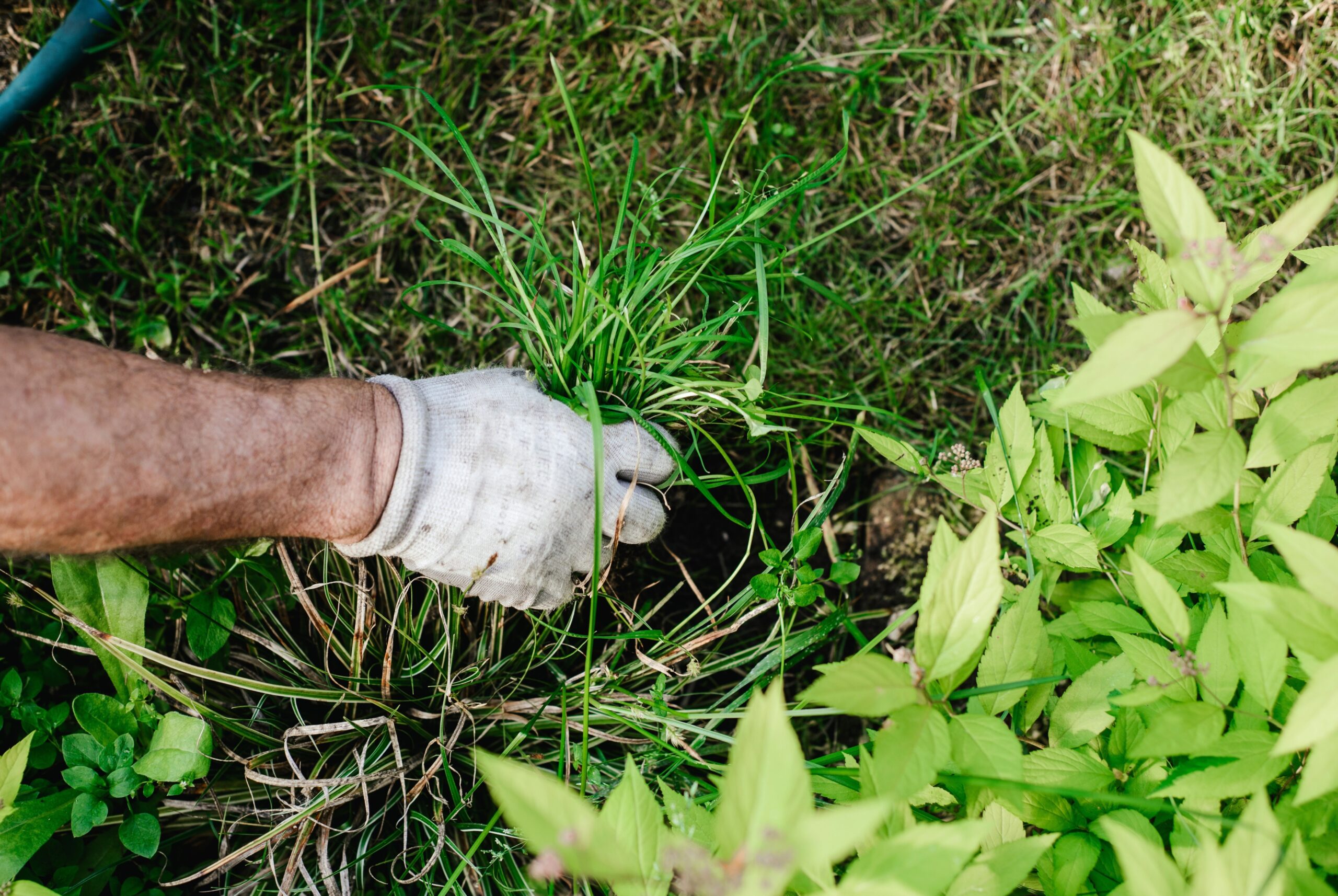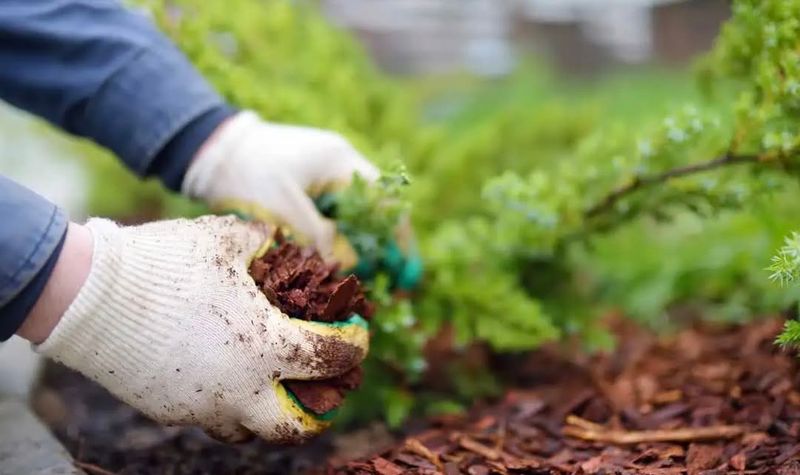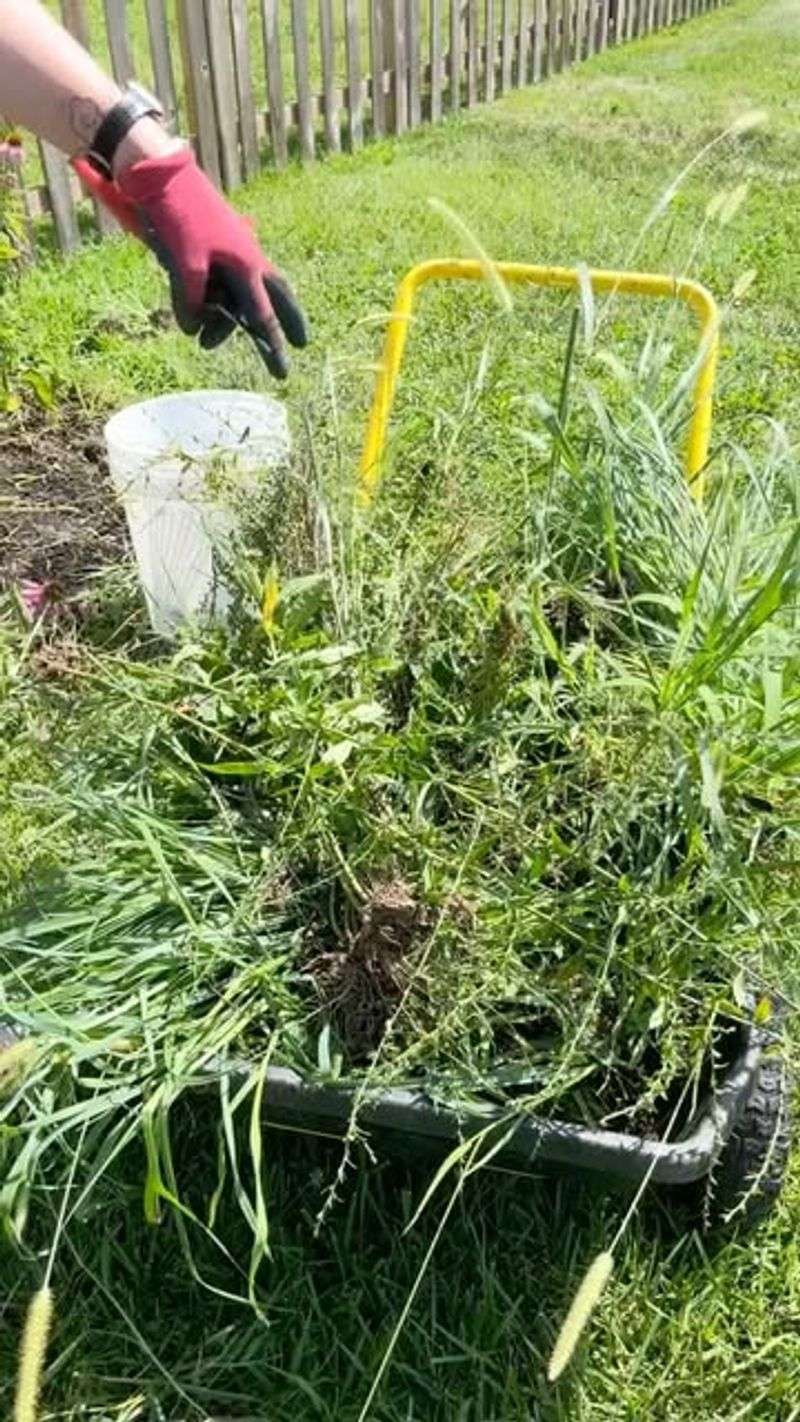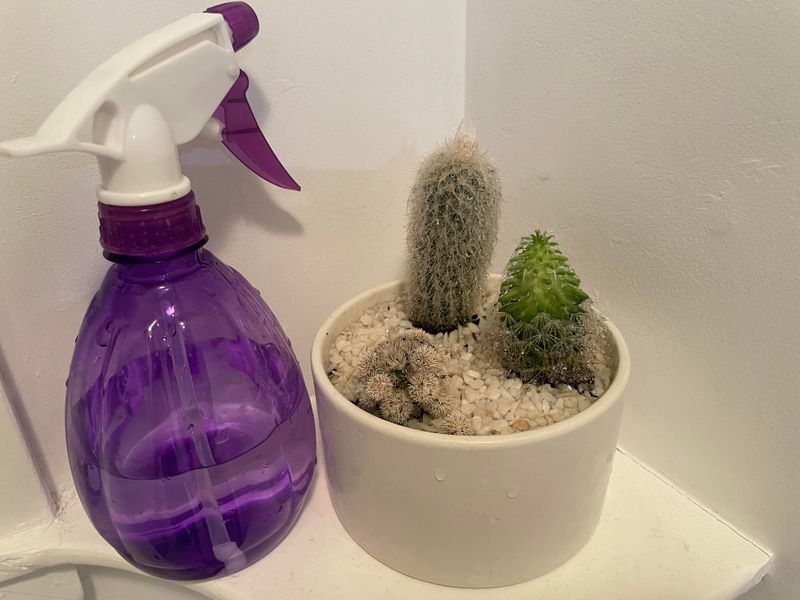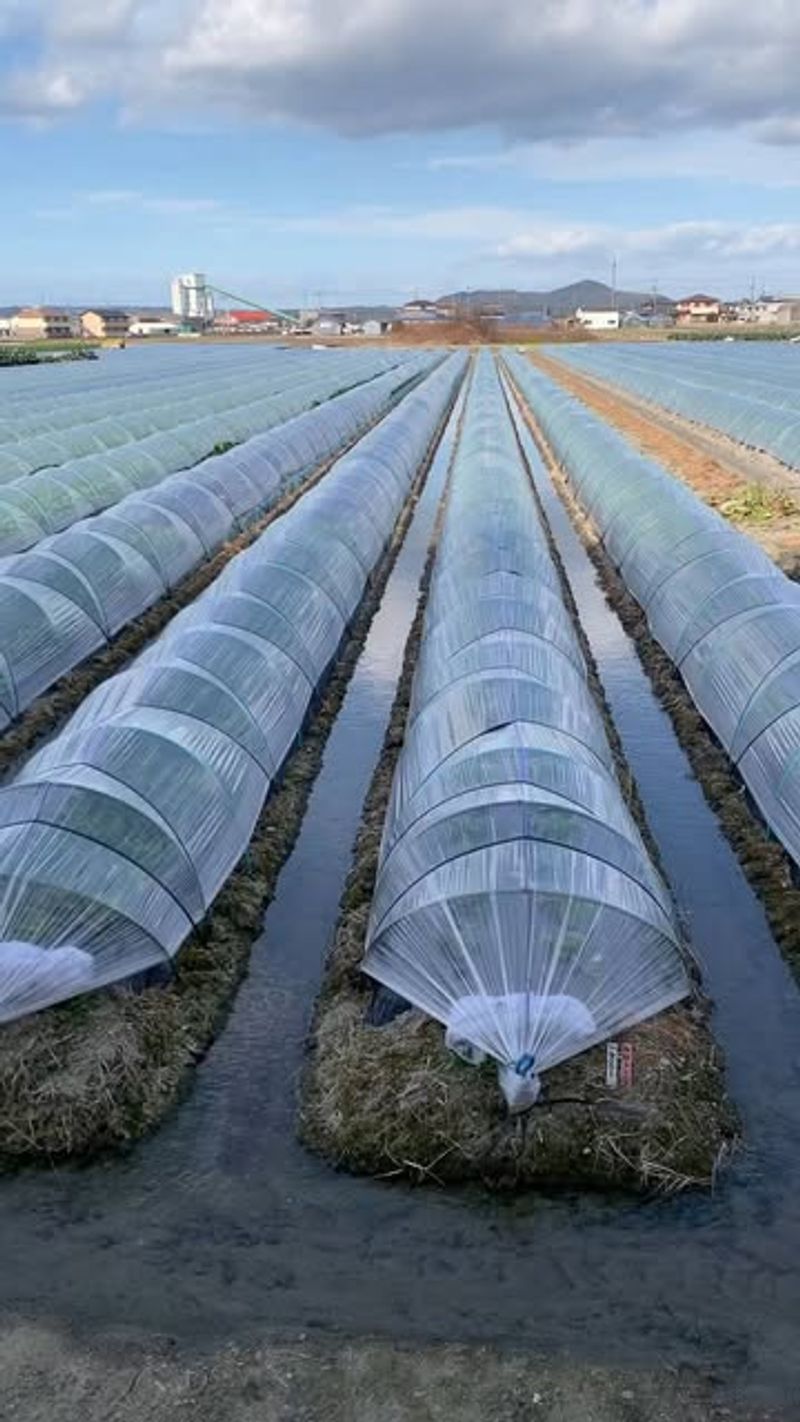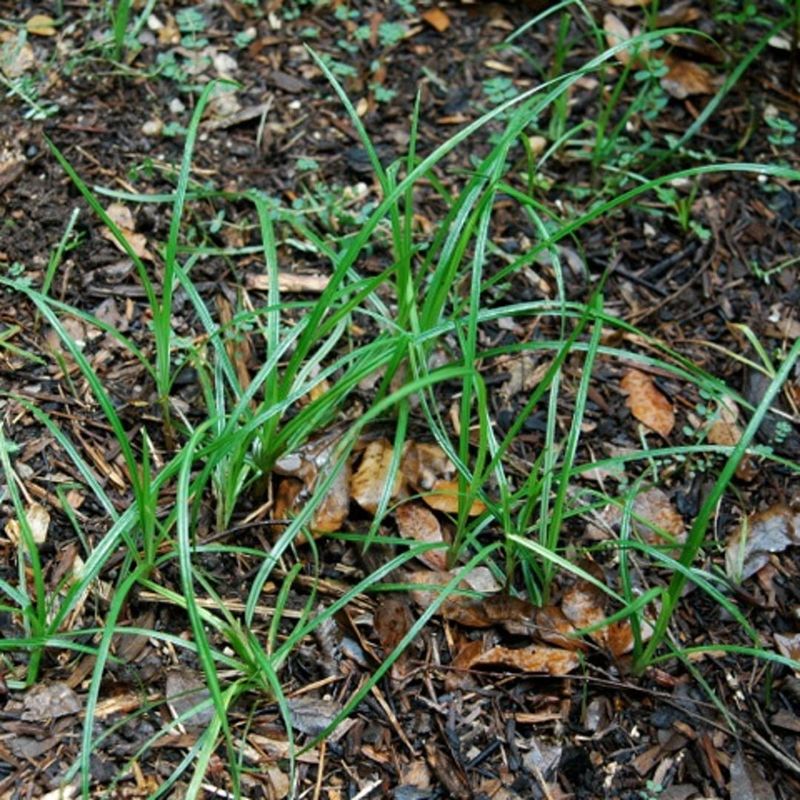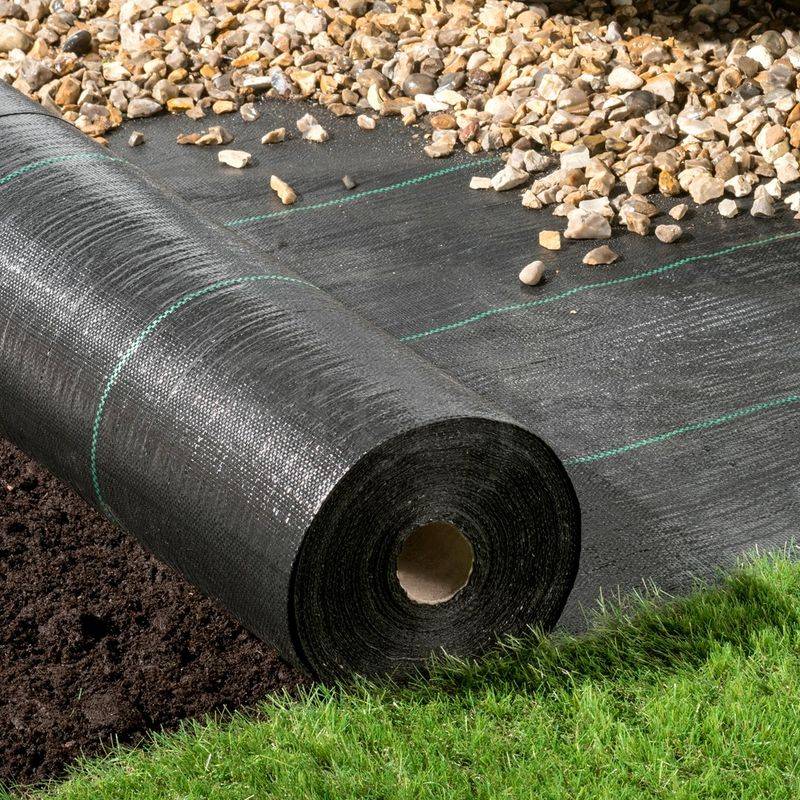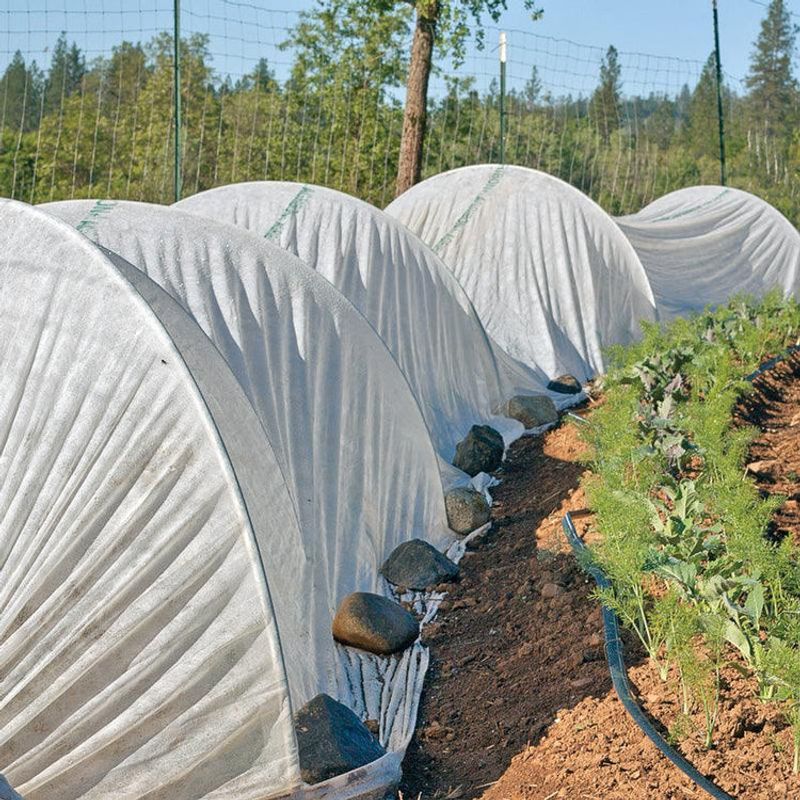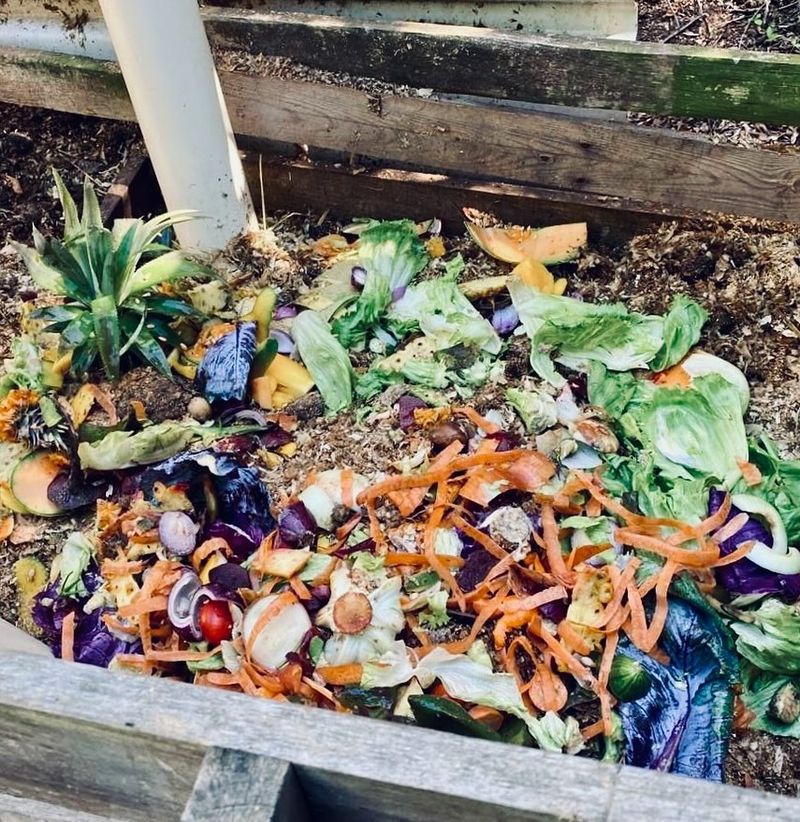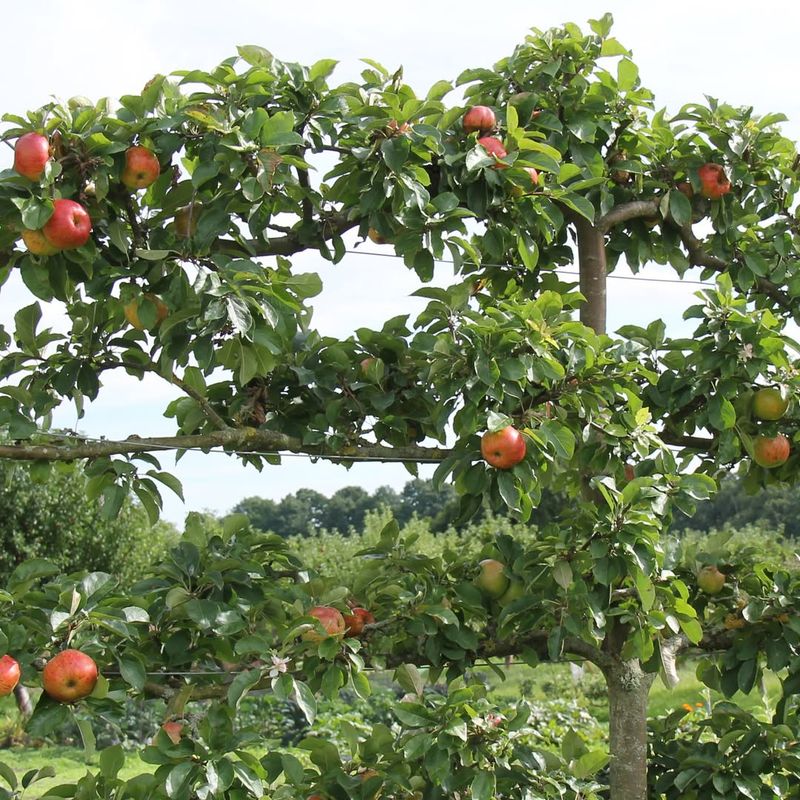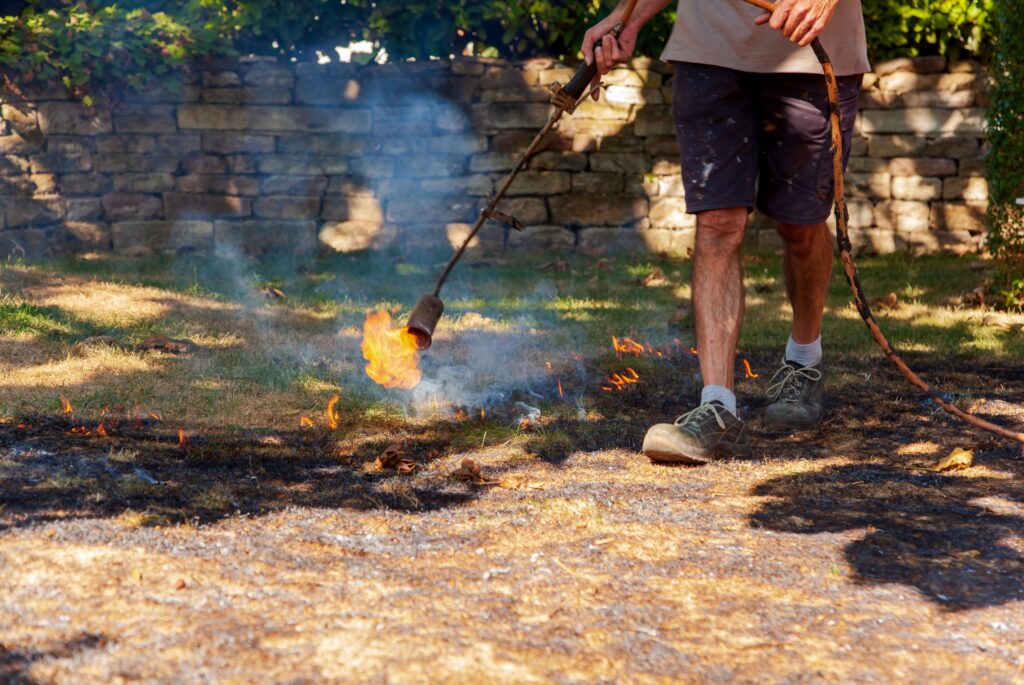Step into your garden and it’s all green glory—lush plants thriving, not a weed in sight. It’s no fantasy.
With a few smart tricks and steady upkeep, you can send weeds packing and enjoy a vibrant, low-maintenance space without a single drop of chemicals.
1. Mulching Magic
Mulching is like giving your garden a cozy blanket. It covers the soil, blocking sunlight, which prevents weeds from growing. Organic mulch, such as straw or wood chips, also nourishes the soil. Mulch not only conserves moisture but also keeps your plants healthy. Try it around vegetables and flowers.
When applying mulch, aim for a layer about two to three inches thick. This will effectively smother weed seeds that try to germinate. It’s a simple yet powerful tool in keeping weeds at bay. Plus, it makes your garden look neat and tidy.
2. Hand Weeding Routine
There’s something satisfying about hand weeding. It allows you to control what stays and what goes. By pulling weeds by hand, you remove the roots completely, stopping them from growing back. This method is gentle on your plants and gives you a chance to inspect for pests.
For effective hand weeding, do it after a rain when the soil is moist. The weeds come out more easily, making your job less strenuous. Regularly dedicating a few minutes to this task keeps your garden weed-free and flourishing.
3. Dense Planting Strategy
Packing your plants closely together is like building a wall against weeds. Dense planting maximizes space and minimizes the chances for weeds to sneak in. When plants grow close, they shade the soil, deterring weed growth naturally. Plus, it makes for a bountiful harvest.
Consider this method for fast-growing plants like lettuce and radishes. It not only prevents weeds but also promotes healthy plant competition. Your garden will be bursting with life, and you’ll spend less time dealing with unwanted guests.
4. Homemade Vinegar Spray
Using vinegar as a weed killer is like having a secret weapon. It’s natural and effective at withering unwanted plants. This acidic solution burns weeds on contact. For best results, spray during sunny weather when weeds are dry for quick absorption.
Mix white vinegar with a bit of dish soap for an enhanced effect. Be careful not to spray on your cherished plants as it can harm them too. This DIY method is a safe alternative to harsh chemicals, giving you peace of mind.
5. Cover Crops Advantage
Cover crops are like nature’s shield against weeds. When you plant them, they grow thick and fast, outcompeting weeds. These crops not only improve soil health but also suppress weeds by shading the soil. They’re perfect for resting garden beds.
Try planting oats or clover as cover crops. They’ll enrich your soil with nutrients while keeping weeds at bay. Plus, they attract beneficial insects to your garden. By the time you’re ready to plant, your soil will be rich and weed-free.
6. Boiling Water Technique
Boiling water is a powerful weed fighter. It’s simple yet effective, especially for pesky weeds in hard-to-reach places. This method works by scalding weeds, killing them instantly. It’s perfect for garden paths or driveways.
Pour carefully to avoid harming nearby plants. This eco-friendly method is chemical-free and leaves no harmful residue. It’s cost-effective and readily available, making it a great choice for small weed problems. Just be cautious with the hot water!
7. Solarization for Soil
Harness the sun’s energy with solarization. By covering soil with clear plastic, sunlight heats the ground intensely, killing weeds and seeds. This serves as a natural sterilizer, making it a great choice for preparing new beds.
Leave the plastic on for four to six weeks during the hottest months. This method not only eradicates weeds but also pests and diseases. After solarization, your soil will be ready and fertile for planting, free from unwelcome weed guests.
8. Corn Gluten Meal Use
Corn gluten meal acts as a pre-emergent weed blocker. It prevents seeds from sprouting, keeping weeds at bay. This byproduct of corn processing is safe for humans and pets, offering a great organic alternative.
Apply it early in the season before weeds germinate. It’s most effective in gardens with established plants. While it doesn’t kill existing weeds, it stops new ones from growing. With corn gluten meal, your garden stays healthy and weed-free.
9. Use of Ground Covers
Ground covers are nature’s carpet for your garden. They spread across the soil, blocking weeds from taking hold. Varieties like creeping thyme or ajuga add beauty and fragrance while suppressing weeds. These low-maintenance plants are perfect for borders and between stepping stones.
When choosing ground covers, consider your climate and soil. Once established, they require minimal care. Ground covers not only prevent weeds but also conserve moisture, making your garden both beautiful and practical.
10. Companion Planting Benefits
Companion planting is about choosing plant partners wisely. Some plants, like marigolds, deter weeds and pests when grown near vegetables. They create a natural defense system in your garden, reducing the need for chemicals.
Experiment with combinations like basil with tomatoes. These pairings enhance growth and protect your plants. Companion planting brings harmony to your garden, boosting production while keeping weeds under control. It’s a smart, organic approach to gardening.
11. Regular Hoeing Practice
Hoeing is an age-old technique that remains effective. It involves cutting weeds at the soil surface, preventing them from growing back. This method is fast and efficient, especially for larger garden areas.
Do this in the morning when weeds are most vulnerable. A sharp hoe makes the process quicker and easier. Incorporating hoeing into your routine ensures a weed-free garden, allowing your plants to thrive without competition.
12. Organic Ground Barriers
Organic barriers like cardboard or newspaper act as a shield against weeds. When laid on the soil, they block sunlight, preventing weed growth. Over time, these materials decompose, enriching the soil.
This method is ideal for vegetable gardens. It’s eco-friendly and cost-effective, using materials you likely have at home. By creating a protective layer, organic barriers keep your garden weed-free naturally.
13. Consistent Watering Schedule
Watering wisely can make a difference in weed control. By using drip irrigation, you target plant roots directly. This limits water to the weeds, slowing their growth.
A consistent watering schedule ensures your plants get what they need without encouraging weeds. It’s an efficient and eco-friendly way to maintain a healthy garden. Plus, it conserves water, a bonus for the environment.
14. Weed Barrier Fabrics
Weed barrier fabrics are a gardener’s friend. They act as a shield, preventing weeds from reaching the surface. Made from breathable materials, they allow water and nutrients through while blocking weeds.
Place them before planting, securing edges with pins or soil. This durable method saves time and effort, letting you enjoy your garden more. It’s a smart investment for long-term weed control.
15. Using Baking Soda
Baking soda can be a surprising ally against weeds. Sprinkling it on weeds dries them out, making it effective for paths and driveways. It’s a natural solution that’s safe and easy to use.
Apply about one teaspoon per weed, and watch them wither away. Just be cautious, as baking soda can also harm desired plants if used carelessly. It’s a great tool for targeted weed control in specific areas.
16. Creating a Wildlife-Friendly Space
Inviting wildlife into your garden can help control weeds. Birds and beneficial insects keep your garden’s ecosystem balanced. By providing food and shelter, you encourage these helpers.
Planting native flowers and installing bird feeders transforms your garden into a haven. As wildlife thrives, weeds struggle to compete. This eco-friendly method enhances biodiversity while keeping weeds in check.
17. Frost Cloth for Weeders
Frost cloth isn’t just for cold. It acts like a barrier, protecting young plants and preventing weeds. It allows light and moisture in while keeping weeds out.
Cover your garden beds at the start of the season. This simple method supports healthy plant growth, giving them a head start over weeds. It’s versatile and easy to use, making your gardening life easier.
18. Kitchen Scraps Composting
Turn your trash into treasure with composting. Kitchen scraps enrich the soil, promoting strong plant growth and natural weed suppression. As organic matter breaks down, it enhances soil structure and fertility.
Place your compost pile away from growing areas initially. Once matured, spread it as a layer over your garden beds. This practice not only feeds your plants but also reduces the space for weeds to thrive.
19. Espalier Method
Espalier is an artful way to grow trees. By training branches along a frame, it maximizes space and minimizes weeds. This method is perfect for small gardens and produces an attractive, efficient layout.
Choose fruit trees for best results. As they spread out, they shade the soil, naturally suppressing weeds. Espalier not only saves space but also creates a beautiful, productive garden.
20. Flame Weeding Power
Flame weeding might sound intense, but it’s a surprisingly efficient and eco-friendly way to zap weeds. Using a flame weeder—a tool that emits a targeted burst of heat—you can quickly wilt and kill weeds without disturbing the soil or applying any chemicals.
This method works best on young weeds and is ideal for paths, gravel areas, and driveways. Simply pass the flame over the weed for a second or two—no need to char it completely. It’s fast, effective, and satisfying. Just be cautious during dry weather and follow all safety guidelines. With flame weeding, you can tackle problem spots with precision and ease.

